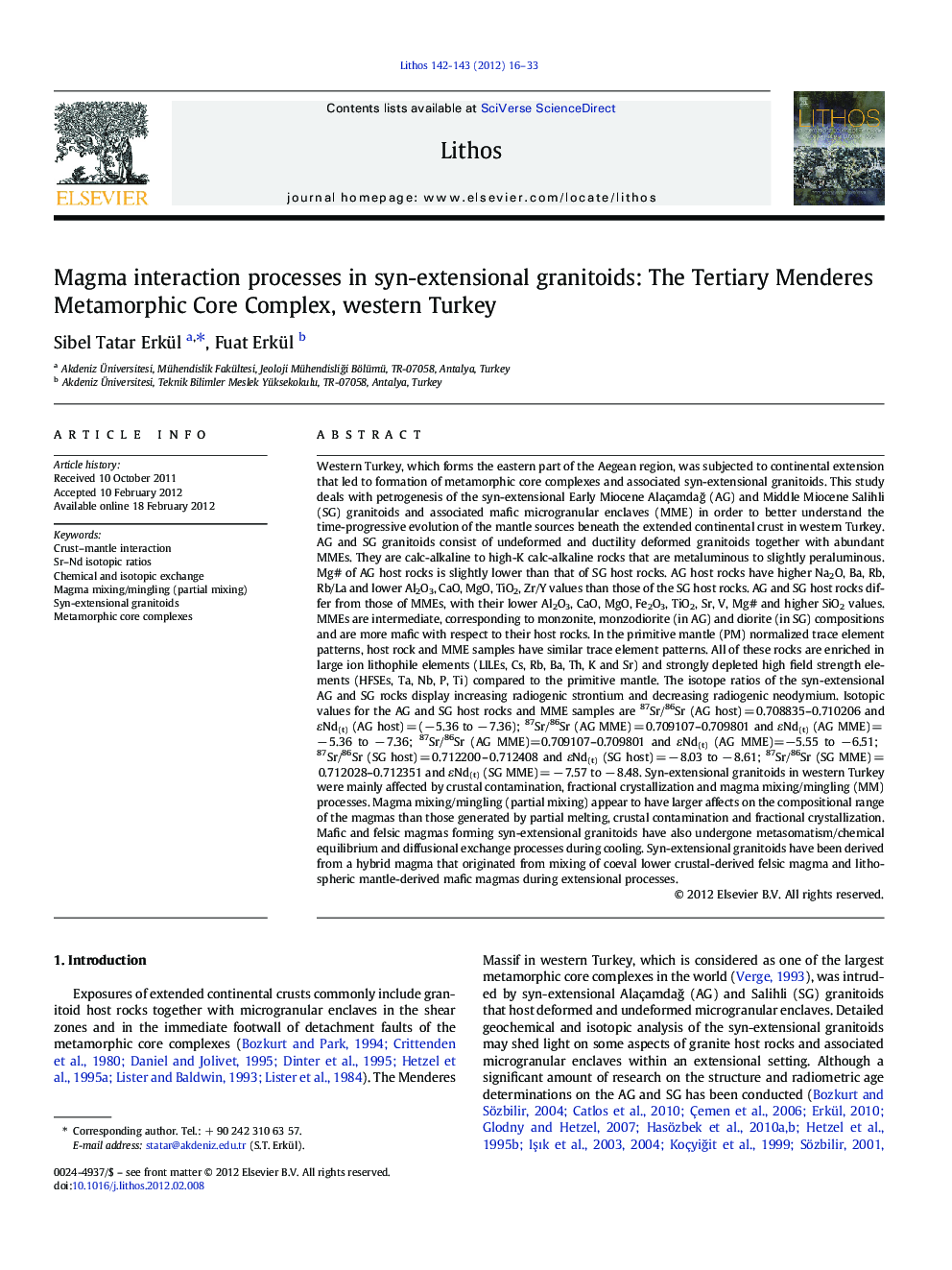| Article ID | Journal | Published Year | Pages | File Type |
|---|---|---|---|---|
| 4716591 | Lithos | 2012 | 18 Pages |
Western Turkey, which forms the eastern part of the Aegean region, was subjected to continental extension that led to formation of metamorphic core complexes and associated syn-extensional granitoids. This study deals with petrogenesis of the syn-extensional Early Miocene Alaçamdağ (AG) and Middle Miocene Salihli (SG) granitoids and associated mafic microgranular enclaves (MME) in order to better understand the time-progressive evolution of the mantle sources beneath the extended continental crust in western Turkey. AG and SG granitoids consist of undeformed and ductility deformed granitoids together with abundant MMEs. They are calc-alkaline to high-K calc-alkaline rocks that are metaluminous to slightly peraluminous. Mg# of AG host rocks is slightly lower than that of SG host rocks. AG host rocks have higher Na2O, Ba, Rb, Rb/La and lower Al2O3, CaO, MgO, TiO2, Zr/Y values than those of the SG host rocks. AG and SG host rocks differ from those of MMEs, with their lower Al2O3, CaO, MgO, Fe2O3, TiO2, Sr, V, Mg# and higher SiO2 values. MMEs are intermediate, corresponding to monzonite, monzodiorite (in AG) and diorite (in SG) compositions and are more mafic with respect to their host rocks. In the primitive mantle (PM) normalized trace element patterns, host rock and MME samples have similar trace element patterns. All of these rocks are enriched in large ion lithophile elements (LILEs, Cs, Rb, Ba, Th, K and Sr) and strongly depleted high field strength elements (HFSEs, Ta, Nb, P, Ti) compared to the primitive mantle. The isotope ratios of the syn-extensional AG and SG rocks display increasing radiogenic strontium and decreasing radiogenic neodymium. Isotopic values for the AG and SG host rocks and MME samples are 87Sr/86Sr (AG host) = 0.708835–0.710206 and εNd(t) (AG host) = (− 5.36 to − 7.36); 87Sr/86Sr (AG MME) = 0.709107–0.709801 and εNd(t) (AG MME) = − 5.36 to − 7.36; 87Sr/86Sr (AG MME)=0.709107–0.709801 and εNd(t) (AG MME)=−5.55 to −6.51; 87Sr/86Sr (SG host) = 0.712200 – 0.712408 and εNd(t) (SG host) = − 8.03 to − 8.61; 87Sr/86Sr (SG MME) = 0.712028–0.712351 and εNd(t) (SG MME) = − 7.57 to − 8.48. Syn-extensional granitoids in western Turkey were mainly affected by crustal contamination, fractional crystallization and magma mixing/mingling (MM) processes. Magma mixing/mingling (partial mixing) appear to have larger affects on the compositional range of the magmas than those generated by partial melting, crustal contamination and fractional crystallization. Mafic and felsic magmas forming syn-extensional granitoids have also undergone metasomatism/chemical equilibrium and diffusional exchange processes during cooling. Syn-extensional granitoids have been derived from a hybrid magma that originated from mixing of coeval lower crustal-derived felsic magma and lithospheric mantle-derived mafic magmas during extensional processes.
Graphical abstractFigure optionsDownload full-size imageDownload as PowerPoint slideHighlights► Syn-extensional granitoids and mafic microgranular enclaves were studied to understand magma sources. ► Petrogenesis was evaluated by petrographical, petrochemical and Sr–Nd isotopic data. ► Role of crustal contamination, partial melting, fractional crystallization and magma mixing/mingling processes. ► Hybrid magma source for syn-extensional granitoids in western Turkey.
